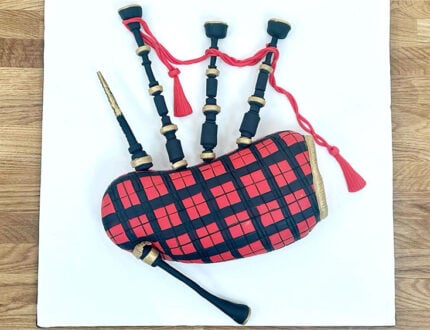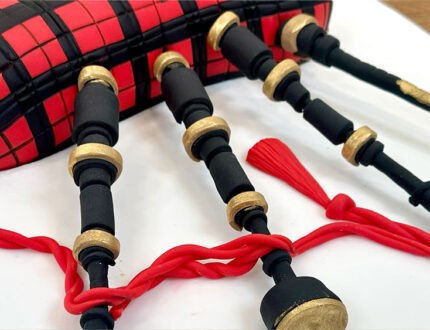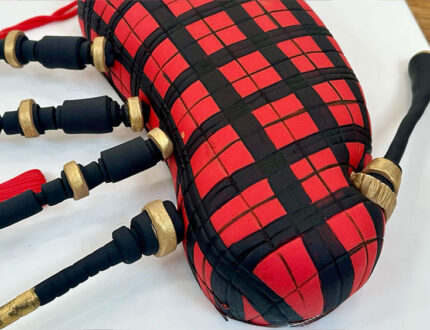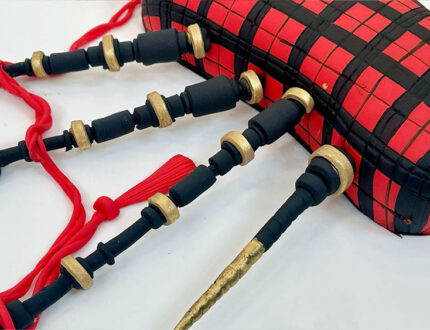Tutorial Preview
Bite Sized
Watch the speeded up fast edit in under 2 mins!
Highlights
Short of time? Learn all the key learning pints in under 14 mins!
1. Carving and shaping the cake
Paul starts by carving the shape using pictures to guide him.
2. Covering the cake
Due to the shape of the bagpipes this is an awkward cake to neatly over. However, Paul makes quick work of it and gets it all smoothly covered.
3. Creating the tartan
Now for the tricky bit. Watch how Paul creates the tartan effect from sugar!
4. Covering the board
Paul now covers the board.
5. Making and adding the pipes
The key part of this design is to get the pipes looking as good to the real thing as possible. Using pictures and a lot of patience Paul creates a great replica look.
6. Adding the tassels and finishing touches
Paul brings it all together by adding the tassels and the all important finishing touches.
7. Other Ideas
Paul offers some extra hints and tips on how to use the skills learned here for other designs.
8. Pro Lesson
Paul offers some pricing and promotional ideas for our Pro members.
Scottish Bagpipes Cake Tutorial
Join Paul in the studio as he creates these traditional Scottish Bagpipes in another great cake tutorial on CakeFlix. This was by special request by a member who had a Bagpipes cake project coming up. Paul rose to the challenge and with lots of key learning points along the way, this is definitely worth watching!
In the following tutorial, you will learn how to…
- Carve, ganache and ice an unusual shaped cake
- Paint tartan onto icing
- Make non-edible pipes
- Produce all the magical finishing touches
- and much, much more
Don’t forget to share your interpretations of your baking exploits with Paul and the rest of the CakeFlix Family on our Facebook group.
History of Bagpipes
Bagpipes have a long and varied history, with evidence suggesting their existence across multiple continents and cultures for millennia. Here’s a brief overview:
Early Origins
- Ancient origins are uncertain but are believed to trace back to the Middle East and possibly Egypt.
- Early forms of bagpipes are thought to have existed in the region around 1000 BC.
- Mentions of pipes with bags can be found in ancient texts and artwork, suggesting early versions were widespread.
Roman Empire
- Evidence suggests that bagpipes were present in the Roman Empire.
- The “utriculus” was a type of bagpipe played in the Roman era, possibly used in military music.
- The Roman Empire’s reach likely helped spread early forms of the instrument across Europe.
Medieval Europe
- Bagpipes became increasingly popular in medieval Europe.
- Various forms of bagpipes existed in different regions, each with unique characteristics.
- They were used for folk music, celebrations, and even in warfare.
Scottish Highlands
- Bagpipes have a strong association with Scotland, particularly the Great Highland Bagpipe.
- The Great Highland Bagpipe developed its distinct form in the 15th and 16th centuries.
- It played a significant role in Scottish clan culture and military traditions.
Modern Era
- Bagpipes continue to be played in various traditions around the world.
- They remain central to Scottish culture and are performed at events and ceremonies.
- Different types of bagpipes are played in other regions, such as Ireland, France, and Eastern Europe.





